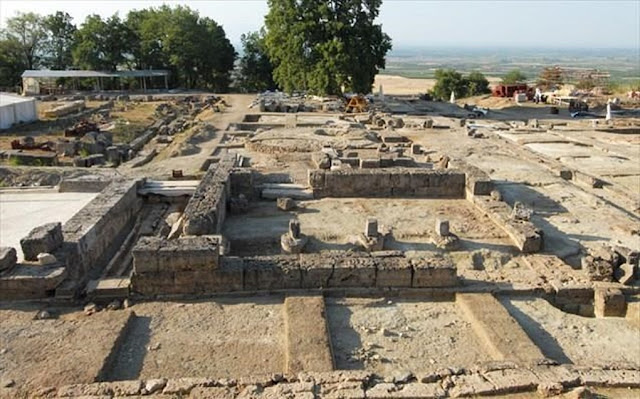After repeated attempts and postponements (see: More restorations
at the
Several reconstructions have circulated since its first excavations in 1957, even though archaeologists initially ignored that they had found the Palace!
As I mentioned
previously (see: The
It took several
years until the Palace in
In antiquity,
the visitor reached the Palace after crossing the city to the north. They
accessed the construction through a monumental Propylon flanked by a Stoa with
Doric colonnades. The front was
The most explicit mapping of the Palace I have found so far is on this site of The Kingdom of Macedon – The Palace of Pella.
On the first
terrace behind the Propylon entrance, the buildings on either side have been
attributed to
The Royal quarters, poorly preserved, were located on a higher terrace further north after some unidentified rooms and close to the fortification wall. To the left or west of these quarters, archaeologists have unearthed a pool and a gymnasium with a large central courtyard surrounded by Stoas. They identified the adjacent building as the Residence for the Royal Pages and other officers who lived in the Palace. The two buildings to the south have been attributed to living quarters, baths, stables, workshops, kitchens, and storage space.
I’m still wondering where Philip’s wives, besides Olympias, stayed, or the many ambassadors and envoys who came to see the King. There also must have been a room reserved for official receptions or banquets and a library. Hopefully, further excavations will follow to shed light on the missing pieces.
Alexander had amassed great wealth, which, in part, was used effectively to
display the Macedonian power and grandeur. Sadly, we will never know what
treasures were kept inside the Royal Palace of


No comments:
Post a Comment